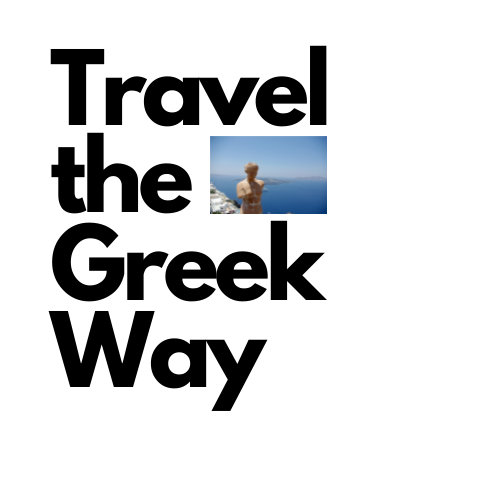Wondering what to do in Lemnos Greece and if it is worth visiting? Lesser-known Lemnos (or Limnos) in the North Eastern Aegean Sea offers the perfect destination for a romantic and relaxing getaway.
There are so many exciting things to do on Lemnos Island: from stunning sandy beaches, volcanic landscapes, and thermal springs, to an impressive, old castle, well-preserved archaeological sites, secluded sea caves, and sublime local wines.
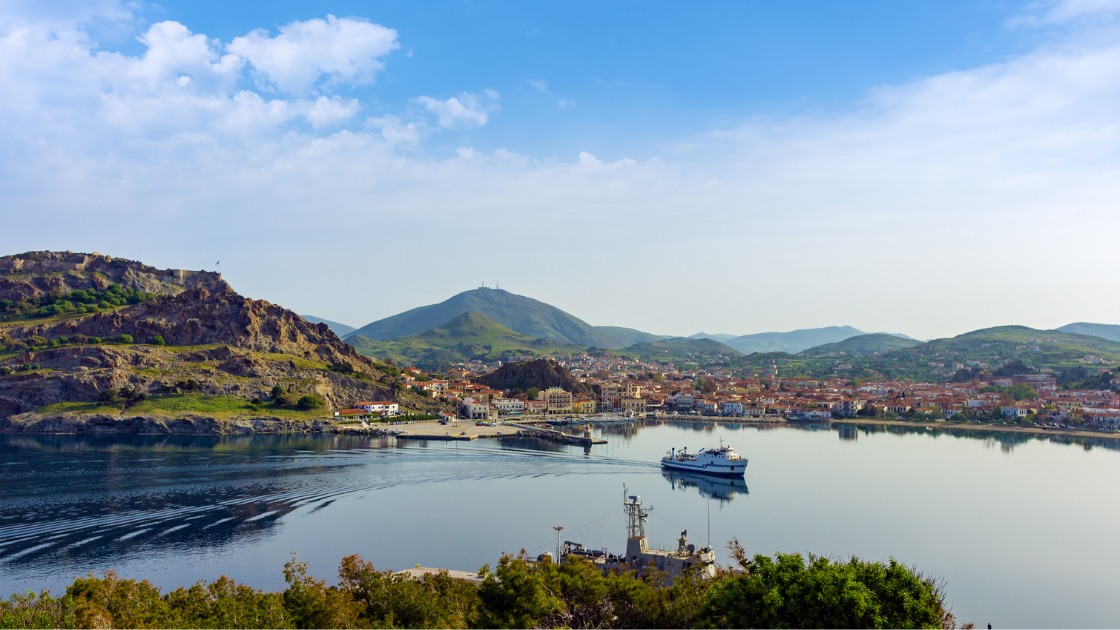
I had the opportunity to visit Lemnos twice. I enjoyed my first, somewhat rushed trip (from Alexandroupoli town) so much that I knew I had to return for a few days to fully experience it. The more time I spent there, the more I fell in love with the island, and I’m sure I’ll be back again!
If you are wondering what to do in Lemnos Greece, I have put together this travel guide, which covers the best things to see on the island. Read on and prepare yourself to visit unique Lemnos!
I’ve included a few handy links to services and products I like so you can plan your trip to Greece. They are often affiliate links. This means I will get a small commission if you book/purchase anything through my links, at no extra cost to you. Thank you for your support!
Fast Facts for Lemnos Greece
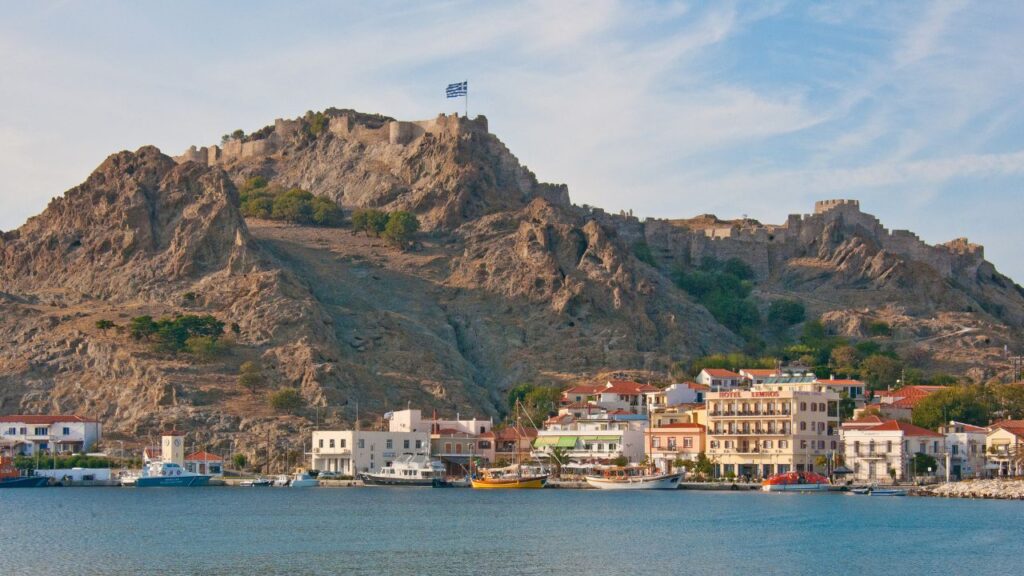
- Population: 16,411 (census 2021)
- It is the 9th largest island in Greece (Crete is the largest one), located between Mount Athos, Samothrace, and Lesvos island.
- Its shape has been formed by volcanoes. The last activity was in the Lower Pleistocene Age (100,000-50,000 years ago), but today, the crater has disappeared.
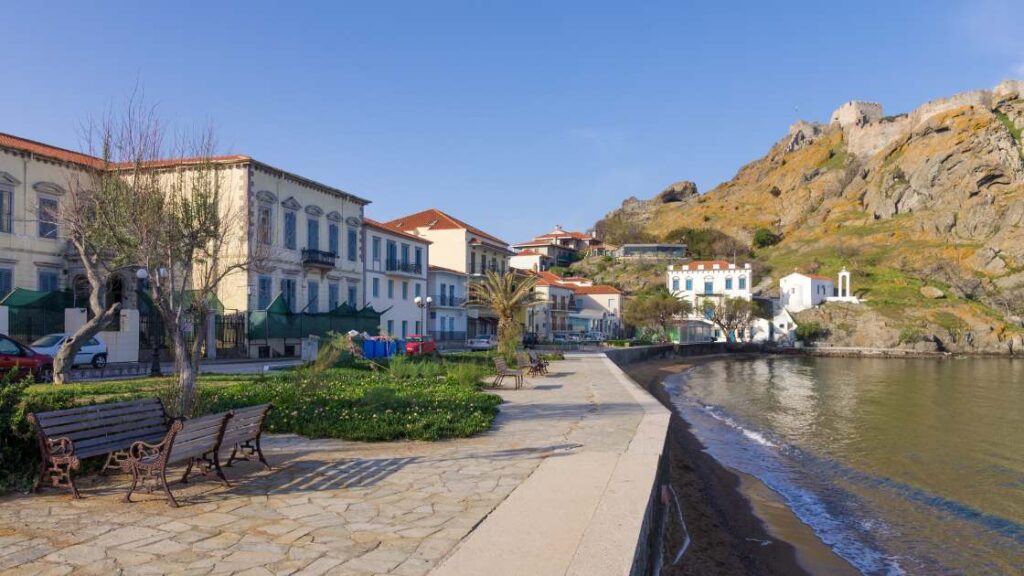
- Its main source of revenue is agriculture. For this reason, the prevailing color in summer is yellow, the color of the harvested wheat fields.
- It’s a food-tasting destination.
- According to Greek mythology, Lemnos is the island of the god Hephaestus, who was cast down to the island as a baby by his mother, Hera, from Mount Olympus.
- Its Greek name is Λήμνος.
What to Do in Lemnos Greece
The island has 34 villages and 310 endless km (192 ml) of coastline with numerous beaches to explore. Here are my favorite things to do in Lemnos:
Explore Myrina: The Capital of Lemnos
Myrina is the island’s charming capital and port. When you arrive by ferry, you’ll be amazed by the view of its two beautiful bays, with the striking castle sitting on top of the hills.
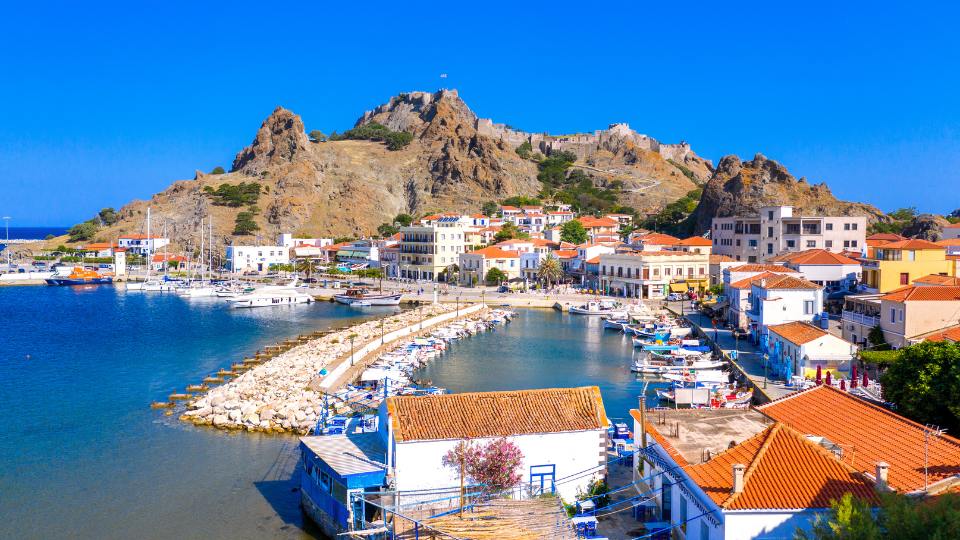
The town is built between those two bays, the Tourkikos (Turkish) Gialos (also known as Limani or Port) and the Romeikos (Greek) Gialos, named after the areas where Greeks used to live during the Ottoman era.
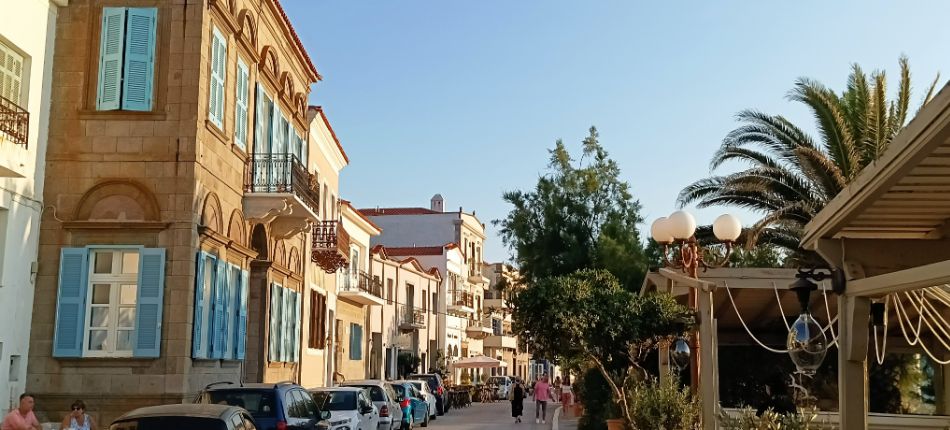
The town has a lot of beautiful neoclassical buildings built by the wealthy Lemniots of Egypt in the late 1800s and early 1900s. These show how the city thrived thanks to farming (like wheat, wine, and honey), shipping, and trade.
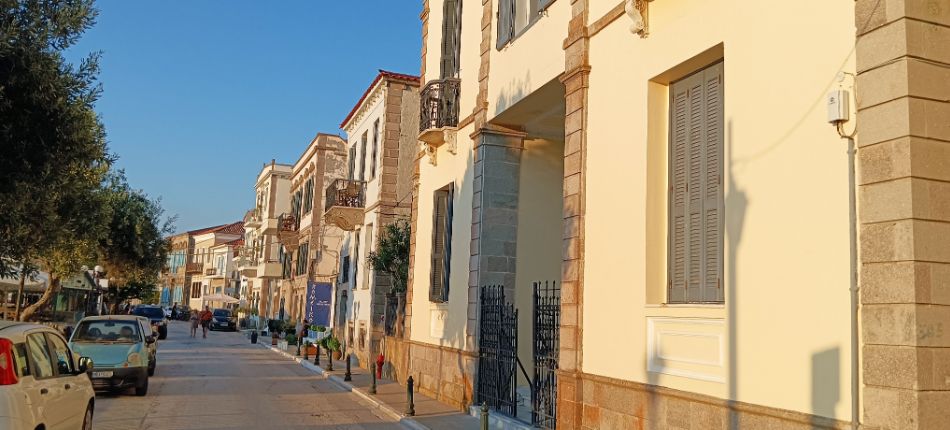
Along the Myrina waterfront, you’ll find plenty of restaurants and traditional taverns. Enjoy a bougatsa (phyllo pie with cream and cinnamon) with coffee by the port, a cocktail at night along Romeikos Gialos, or fresh fish in Tourkikos Gialos.
Between the charming alleys and the main shopping area are shops, cafes, and local products like pottery, honey, wine, and handmade crafts.
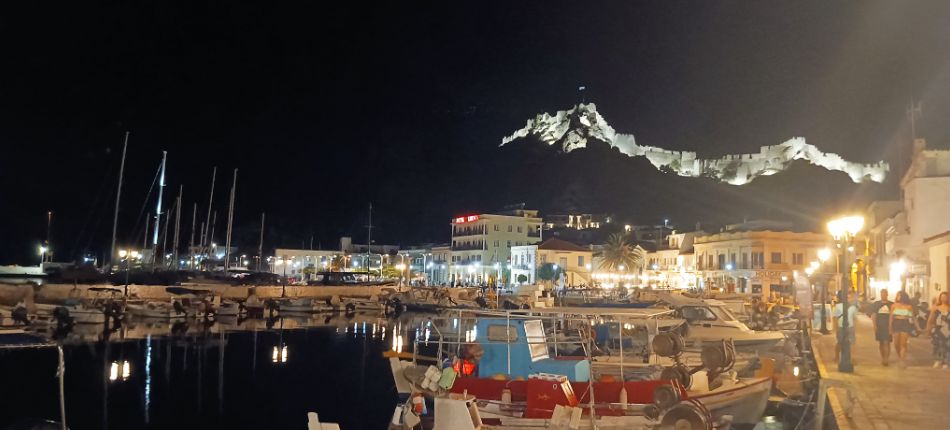
Don’t miss visiting the Archaeological Museum, the beautiful Episcopal Church, the Karatzadios Library, and Therma, an area just outside Myrina famous for its hot springs where you can enjoy a spa bath (check before you go if they operate).
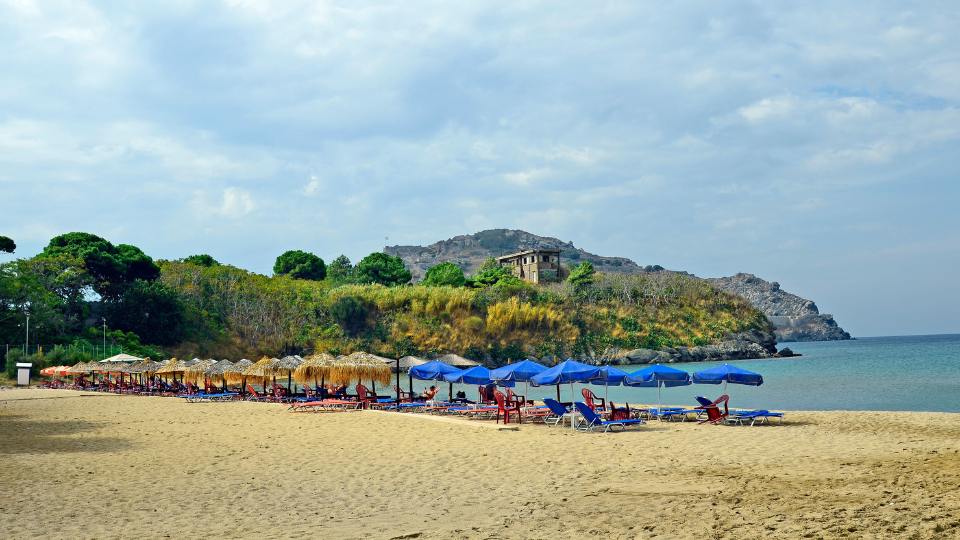
There is also a lovely sandy beach called Riha Nera in Myrina.
Visit the Castle | What to Do in Lemnos Greece
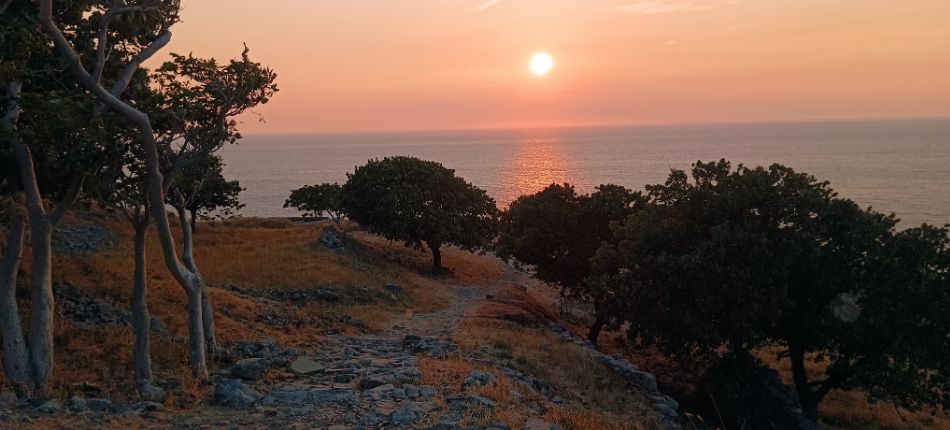
If you take the cobblestone uphill path from Myrina through olive trees and thyme bushes you will get to the Castle of Lemnos, one of the largest castles in Greece.
It was built by the Byzantine Emperor Andronikos A’ Komnenos in 1186 on top of an ancient Pelasgic castle.
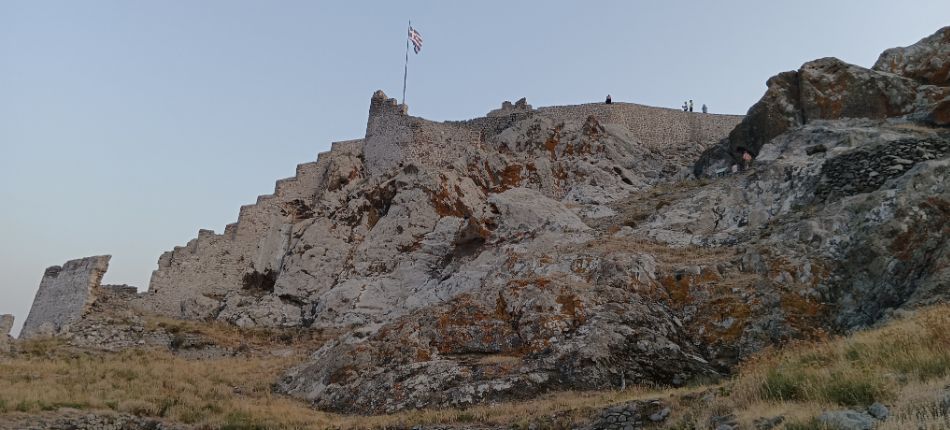
It has a triple wall with a total of 14 towers, reaching up to 8 meters in height and 1.5 meters in thickness, which was protected by a deep moat on the east side, no longer present today.
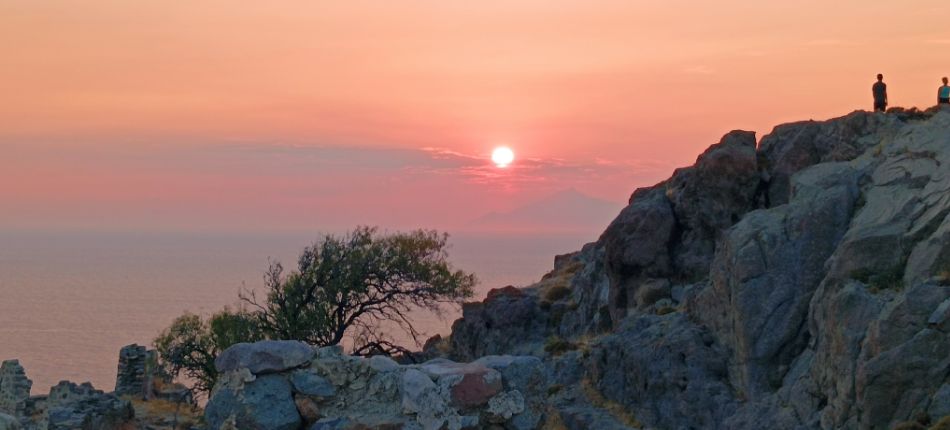
One of the best things to do in Lemnos Castle is to enjoy the impressive sunset views when the sun sets behind Mount Athos, in Chalkidiki.
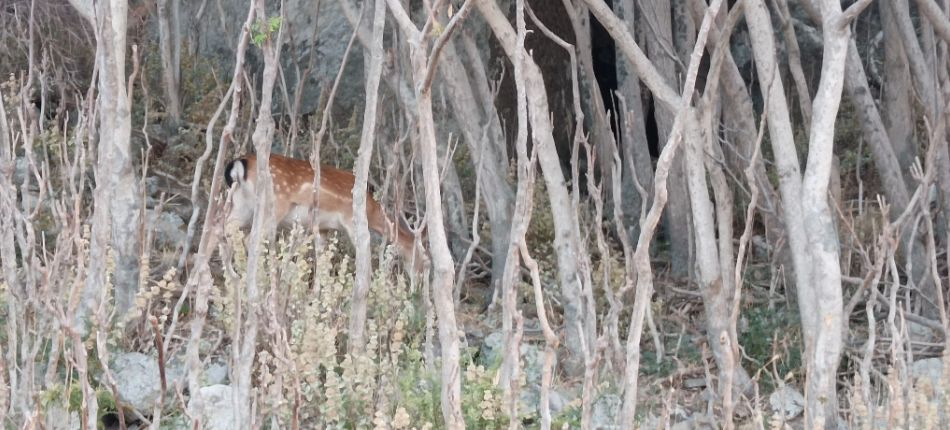
Among the ruins live many wild goats and a large group of deer (around 70)! These are the well-known fallow deer, which were brought from Rhodes a few decades ago, multiplied, and became the new inhabitants of the castle.
Explore the Ammothines Desert Dunes
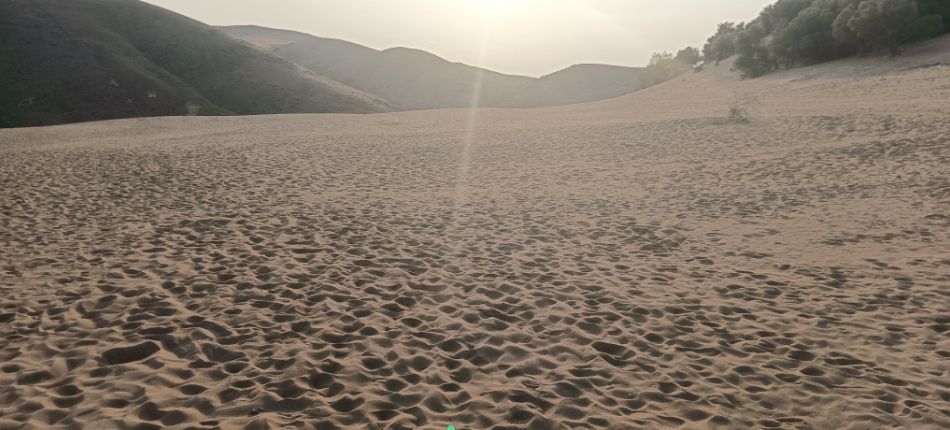
Wait…a desert in Greece? Yup, you read that right! Lemnos is home to Europe’s only desert, called Ammothines.
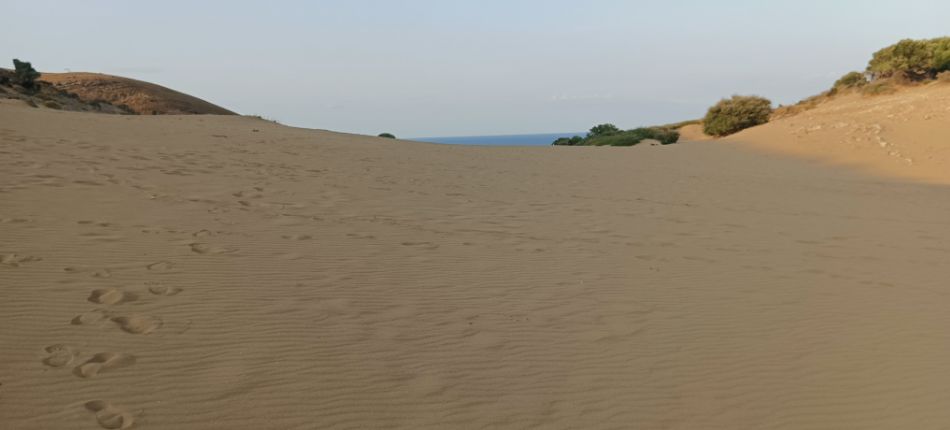
Ammothines is an 18-acre dune area with wild olive and pear trees, oleanders, and other plants, which adds even more to the uniqueness of this landscape, which is one of a kind in Greece.
But the highlight—which I highly recommend—was taking off my shoes and rolling down the dunes.
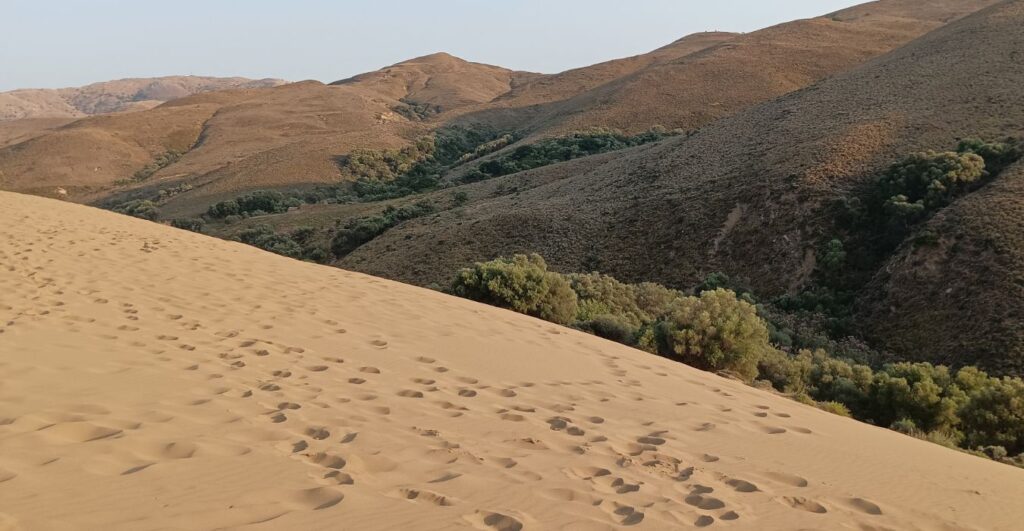
The most common idea about how they formed is that they were shaped by the sea and the wind working together.
Back in prehistoric times, the sea used to come up to this area, but today, the sea is 2 km away at the beautiful beach of Gomati.
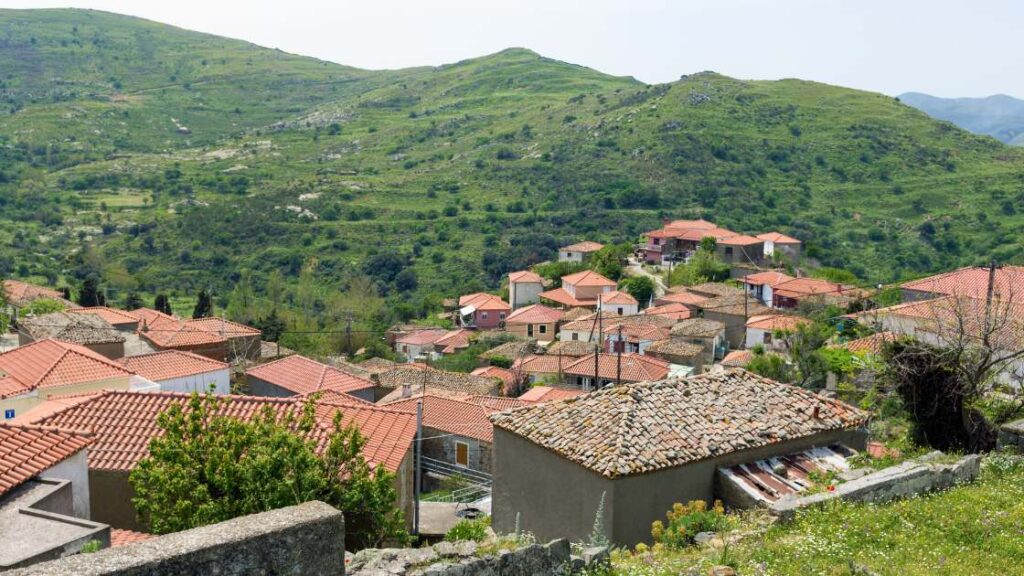
How to get to Ammothines: From the northern village of Katalakko, you will take a dirt road – you need to drive at a slow speed – and you will find the dunes easily; there are plenty of road signs.
Since there is no shade in most parts of it, take plenty of water, a hat, and sunscreen with you.
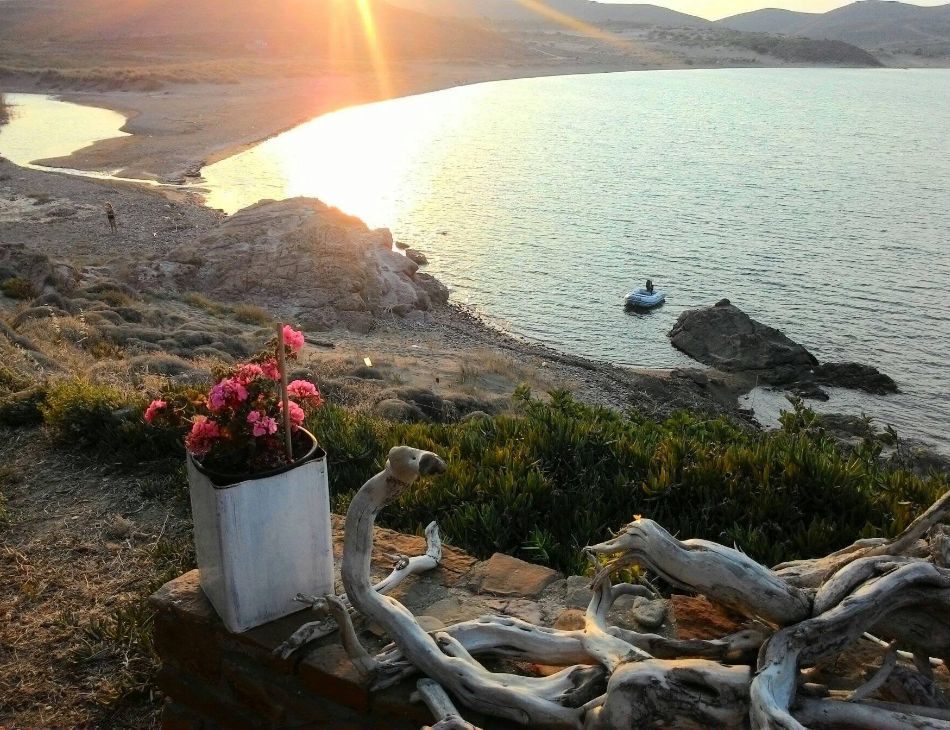
Gomati Beach Food Tip: Do not miss the tavern “Flomari,” where you can taste delicious local dishes like rooster with flomari—a traditional pasta made from top-quality wheat flour from Lemnos, mixed with eggs, fresh cow’s milk, and local sheep’s milk.
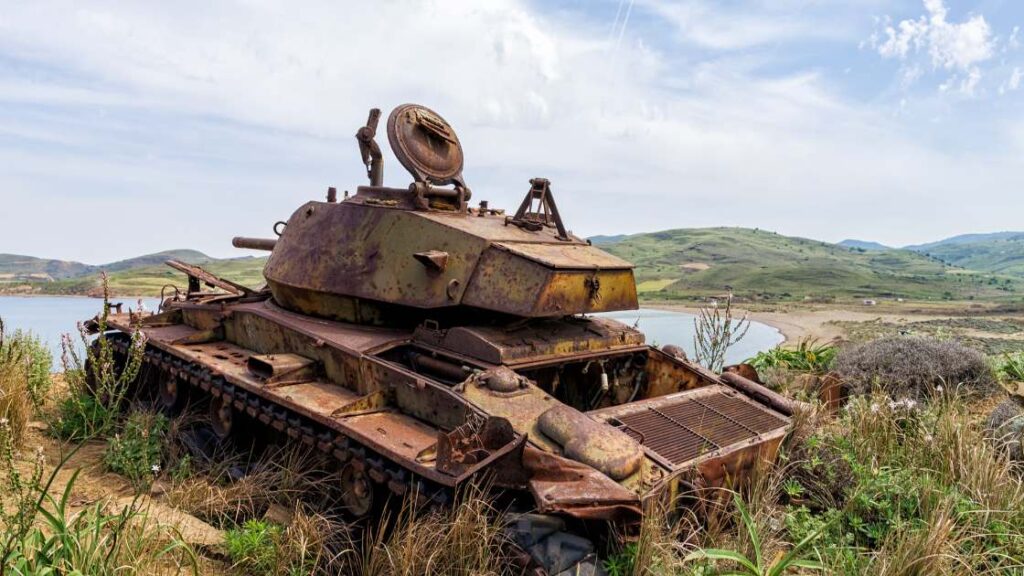
Gomati Beach has soft sand and shallow waters, making it a quiet and family-friendly spot most of the time.
Be sure to look for the abandoned tank on the beach! Better avoid going on a day with strong northern winds.
Enjoy the Lemnos Beaches
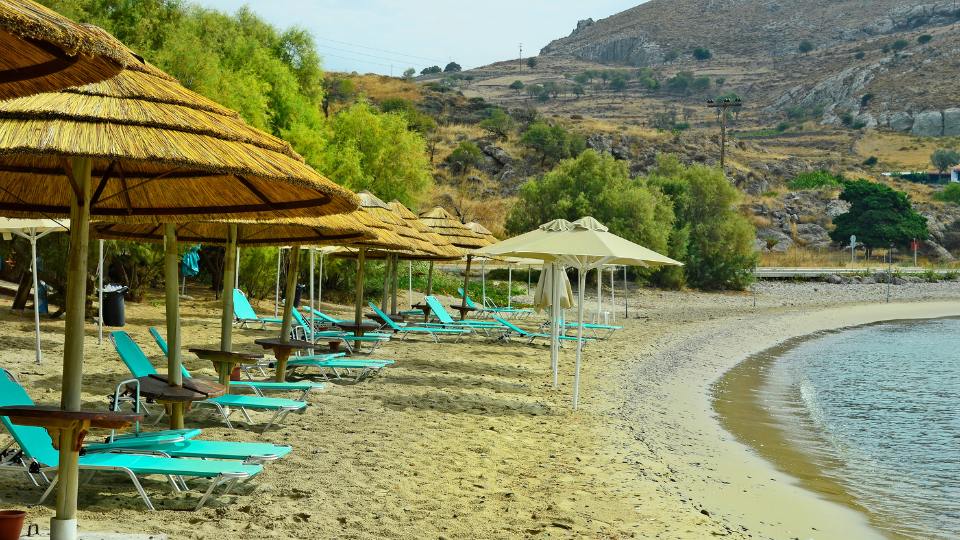
Besides my favorite Gomati, there are plenty of other sandy beaches you can visit around the island:
Agios Ioannis is 1.3 km from Kaspakas village, it has fine sand and shallow waters with taverns and cafes on the waterfront. On its side, you will also find the small chapel of Agios Ioannis.
If you love organized beaches with a beach bar, fine sand, and water sports then Zematas is perfect. You will find it on the northeast side of Lemnos.
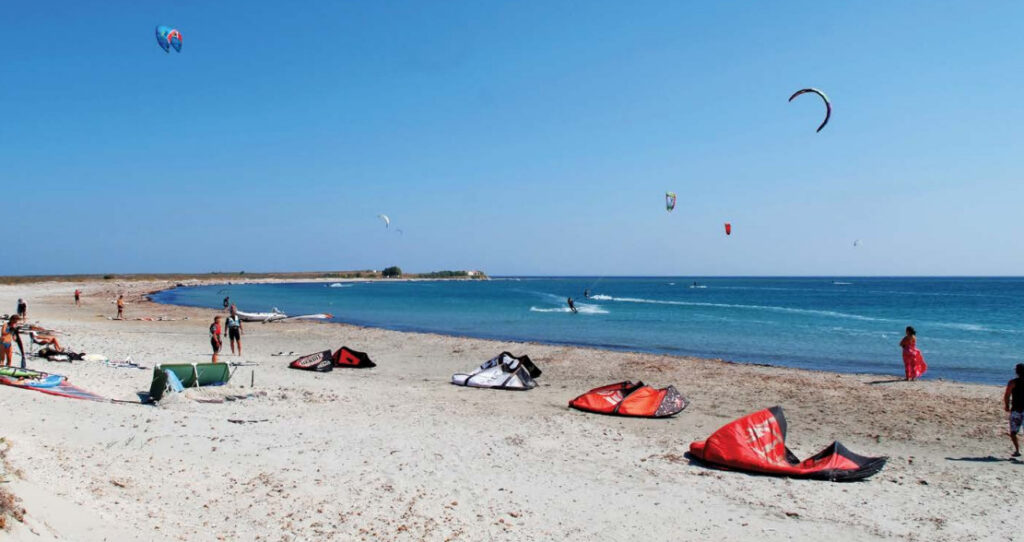
If you’re into windsurfing or kitesurfing, Keros Beach is the perfect spot for you in Lemnos. With its shallow waters and consistent winds, it offers ideal conditions for riding the waves.
The beach is also famous for its beautiful white lilies that grow in the sand, which are a protected species.
Keros Food Tip: Go to Lefkes, a small gourmet canteen on the beach, surrounded by towering poplar trees and listening to amazing music. You’ll enjoy delicious sandwiches, breakfast bowls, and gourmet treats.
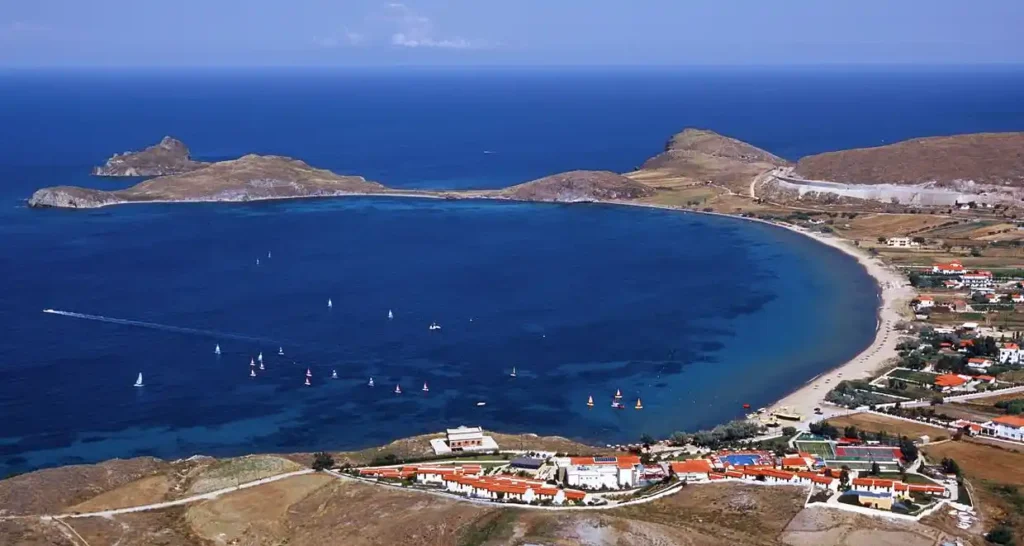
Platy Beach and village in southwestern Lemnos stretches for 700 meters and features fine, golden sand with shallow waters, water sports, and beach bars, awarded with a Blue Flag.
Try O’Sozos Taverna and Taverna Kaloudistas, both in the center of the village. A great tavern on the seafront is Gregoris, with a lovely garden.
Discover Ancient Lemnos | Things to Do in Lemnos Greece
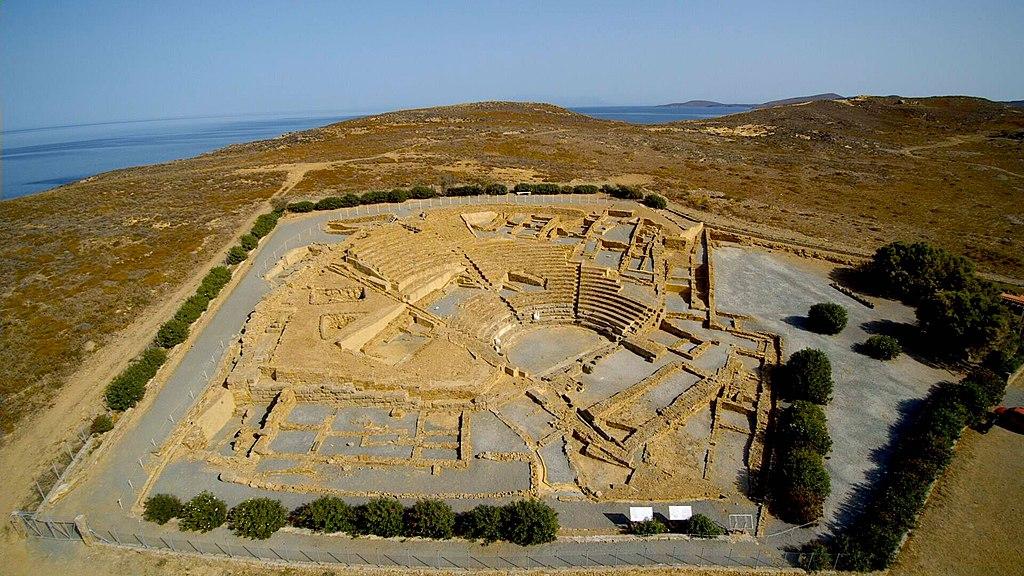
Hephaestia
Like every Greek island, Lemnos also has its share of archaeological sites.
Ancient Lemnos had two important cities: Myrina and Hephaestia, located in the northeastern part of the island and dating back to the 11th-12th century BC.
Among its ruins, you can explore the well-preserved ancient theater (5th century BC) and a sanctuary dedicated to the goddess of Lemnos.
It is open daily except Tuesdays with a €3 entrance.
Sanctuary of Kabeiri
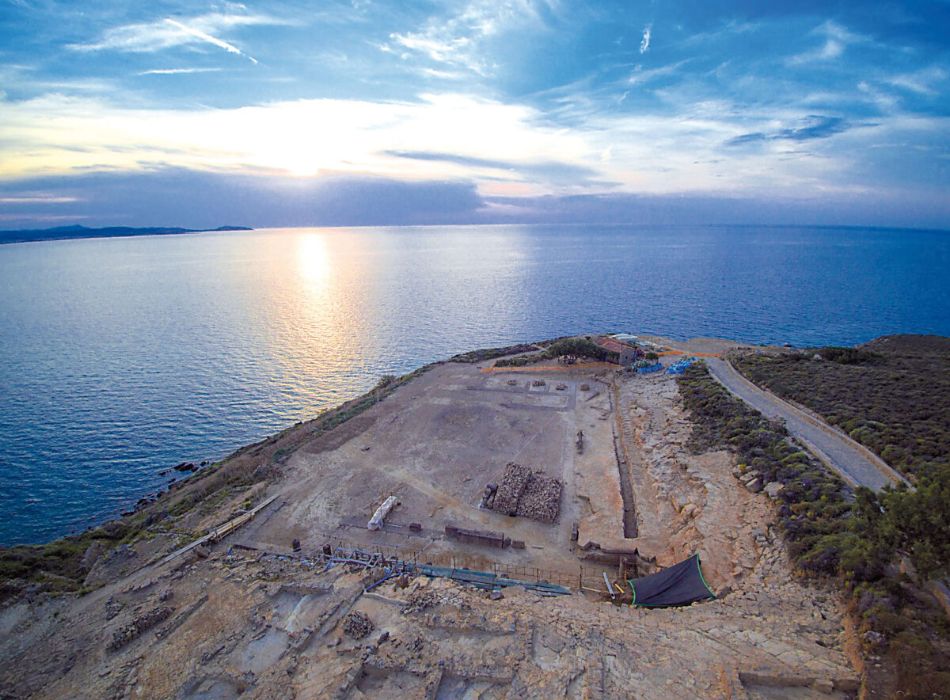
Close to the ancient city of Hephaestia, the sanctuary of the Cabeiri was founded in the late 8th and early 7th centuries BC. Cabeiri were deities (like saints in modern times) who could intercede with other gods to fulfill the wishes of the faithful.
The Bronze Age Settlement of Poliochni
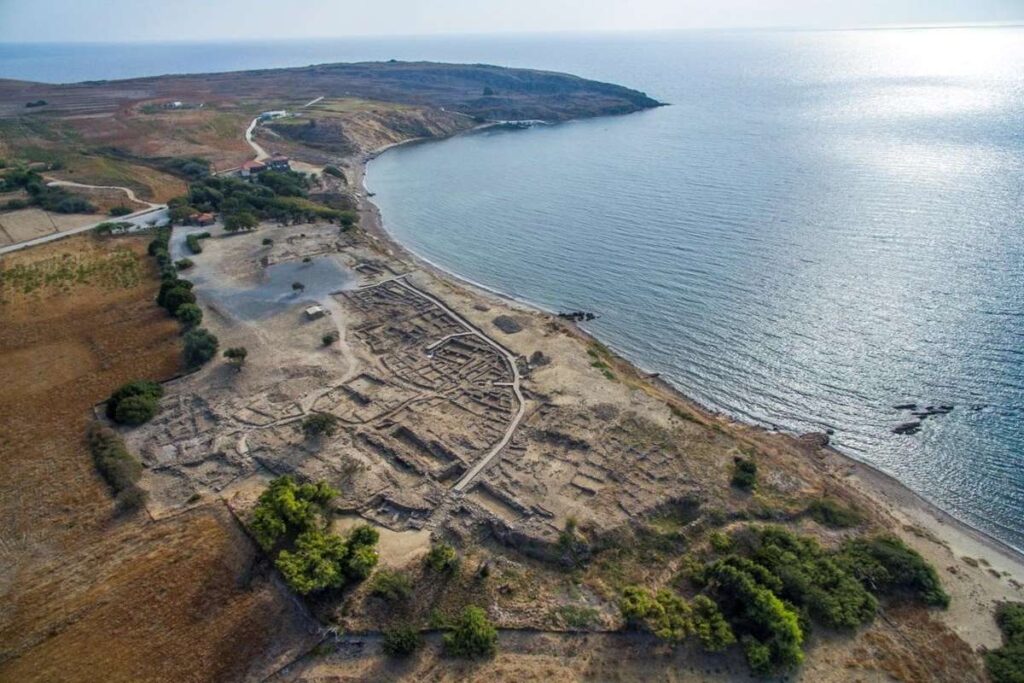
Poliochni is an archaeological site located on the eastern coast of Lemnos, near the village of Kaminia. It dates back to the early Neolithic period in the Aegean, around the 4th or 5th millennium BC.
Positioned directly across from Troy, Poliochni had already evolved into an urban settlement with approximately 1,500 residents by the time Troy was built a thousand years later.
The site included rectangular stone houses, a defensive wall, squares, wells, streets, public buildings, and possibly even a council hall (Bouleuterion).
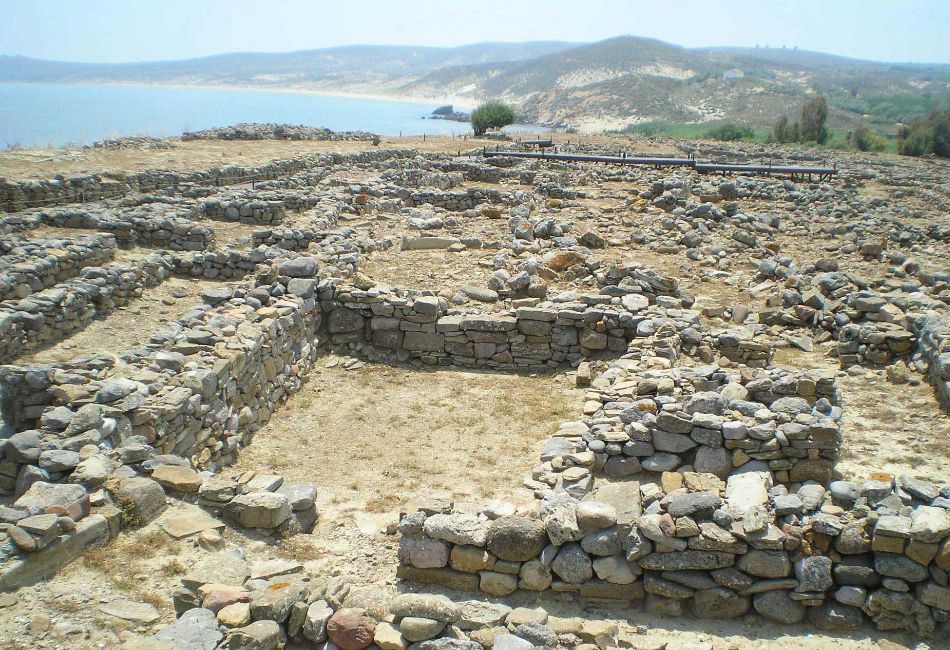
Among other findings in Poliochni was a treasure of gold jewelry that resembles the famous “Treasure of Priam” discovered by Schliemann in Troy and appears to have been crafted in the same workshop.
Today, the Poliochni treasure is housed in the National Archaeological Museum of Athens.
Poliochni is open daily except Tuesdays with a €3 entrance.
Explore the Faraklou Geological Park

One of the best things to do in Lemnos is in the north, in Atsiki, after the village of Propoul,i where it feels like you’ve stepped onto another planet.
Wild, smooth volcanic rock shapes in bright reds and yellows look straight out of a sci-fi movie.
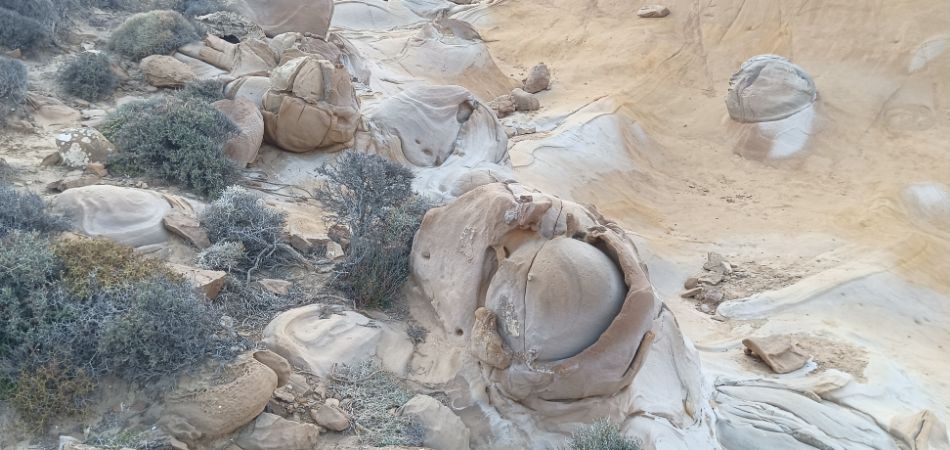
It is believed that they were created by the flowing hot lava that erupted from the volcanoes, which were active on the island thousands of years ago.
When this amount of lava came into contact with the seawater, it cooled down and formed these unusual rocks.
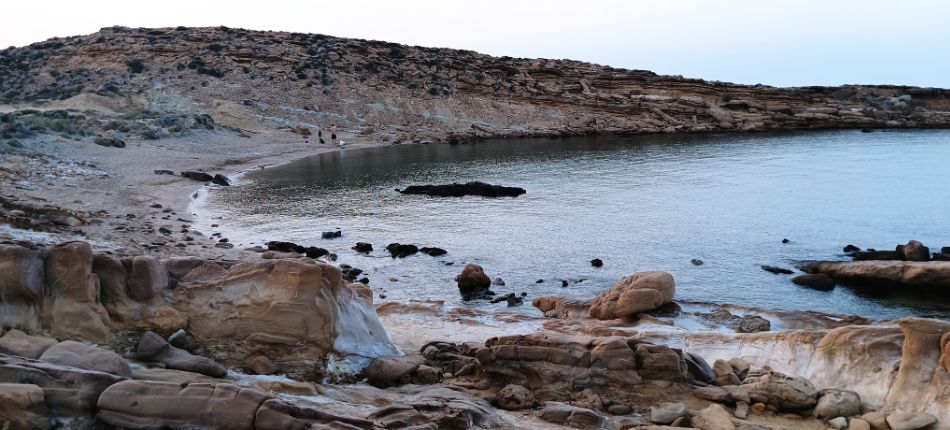
The sedimentary rocks begin from the land and end up inside the sea, where you are more than welcome to dive!
Tour the Gallipoli Historical Monuments (WWI)
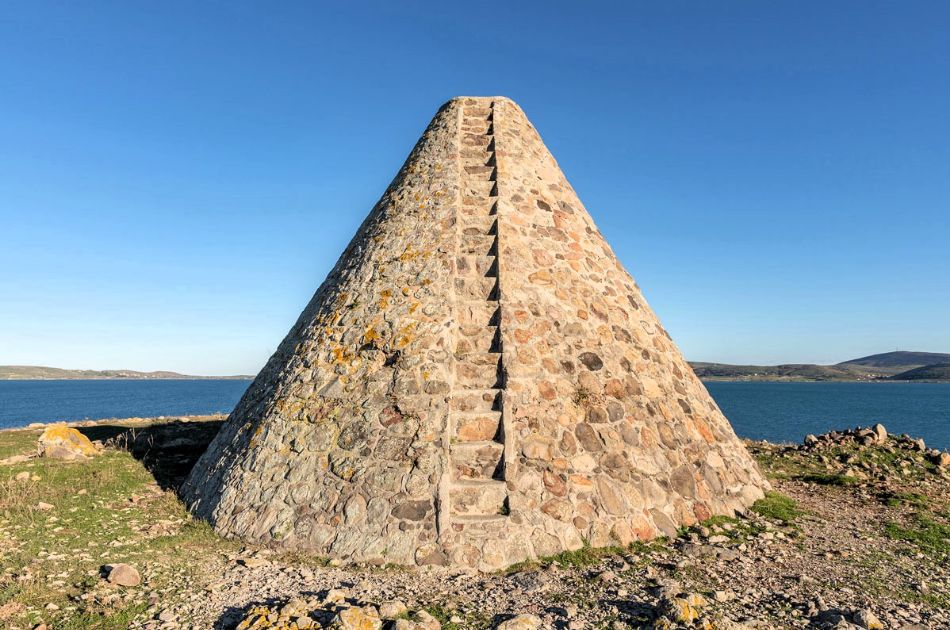
Moudros is a large and protected bay that was used as a supply base and station for the Allies of the Entente during the failed Gallipoli campaign from March 1915 to January 1916.
There were dozens of camps for the British, French, and the thousands of Australians and New Zealanders who took part in the operations, forming the ANZAC forces (Australian and New Zealand Army Corps).
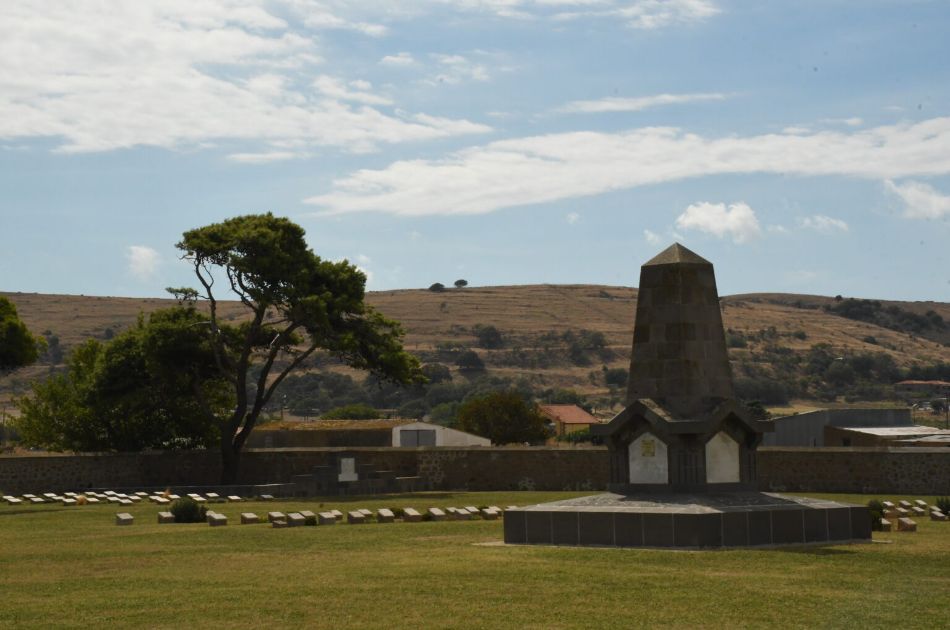
The municipality of Lemnos has created a historical tour under the name project «ANZAC Lemnos – Historical Tour». Using apps and technology (QR, VR) you can be transported in time and discover the history of that important historical event.
Along the 25-kilometer route, monuments, locations that once served as ports, camps, and hospitals for the Allies, as well as military cemeteries, are highlighted.
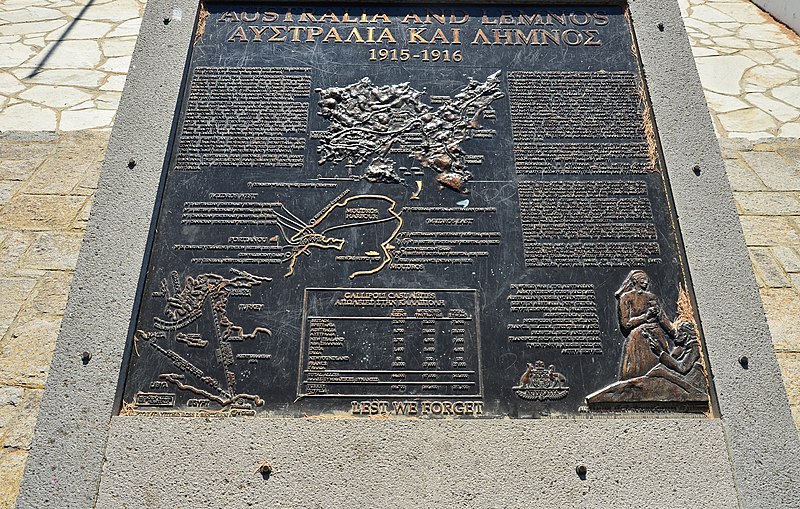
In Moudros village, you can visit the monument dedicated to the Australians, as well as the Moudros History and Naval Tradition Information Center, which is housed in the village’s old school building.
Unique Church of Panagia Kakaviotissa
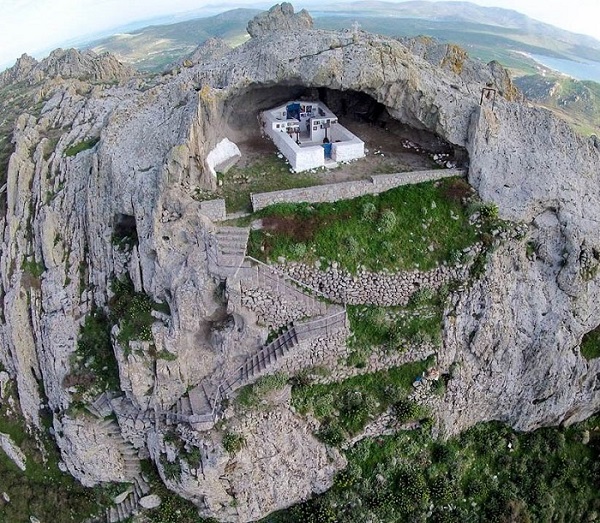
No island is complete without a stunning chapel, and Panagia Kakaviotissa is truly unique as the only roofless church in the world, founded in 1416. It sits atop Mount Kakavos, nestled within a cave and surrounded by dramatic rock formations.
A 15-minute drive from Myrina and a walk down a dirt track will get you there. Visit in the evening to see the gorgeous views of the sea and mountainside.
Where to Eat on Lemnos

If you’re a foodie, Lemnos will steal your heart. From creamy cheeses like Kalathaki Limnou to honey, wine, and handmade pasta, this island is a food lover’s paradise.
Lemnos’ famous wines are the perfect match for the island’s flavorful cuisine. The region also produces Lemnio, one of the island’s oldest wines, which is even referenced in Homer’s writings.
Highly recommended taverns, foodie cafes, and restaurants around the island are:
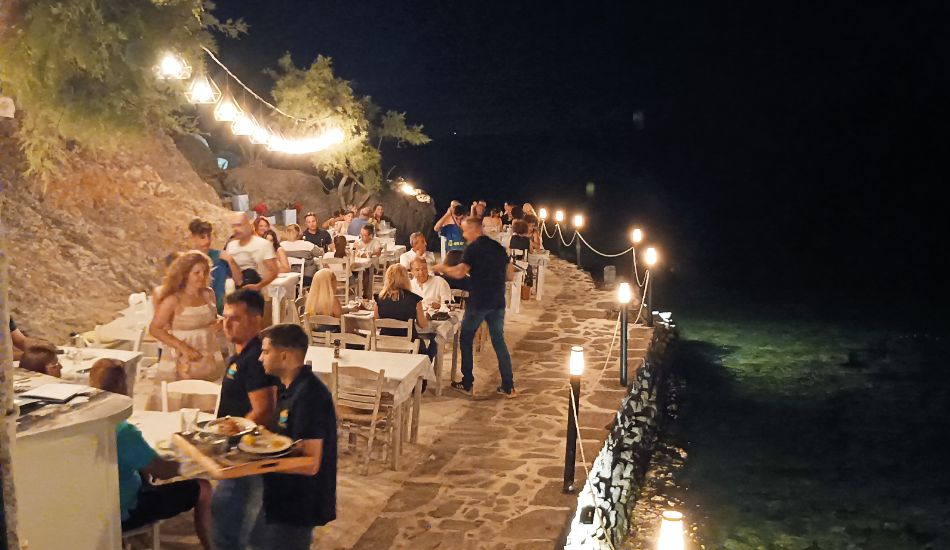
- Riza_limnos in Androni, Myrina, where you can taste sourdough pies served with fresh cheese, olive oil, grapes, and freshly ground pepper or juicy melon with cheese, basil, and grape
- Man-tella in Sardes with rooster with flomaria (a traditional pasta), goat, and rabbit stifado (stew).
- San Allote in Kontias where you can enjoy seafood meze and grilled meats.
Lemnian Dessert Recipe: Samsades

Samsades is a crispy, honey-soaked syrup delicious dessert, filled with plenty of sesame seeds, which is traditionally the nut of Lemnos.
You can find the original recipe here in Greek (use Google Translate).
Where to Stay in Lemnos
Myrina is the capital and the main port of Lemnos, offering a mix of modern amenities and traditional charm. It’s a great spot if you want to stay close to restaurants, shops, and nightlife.
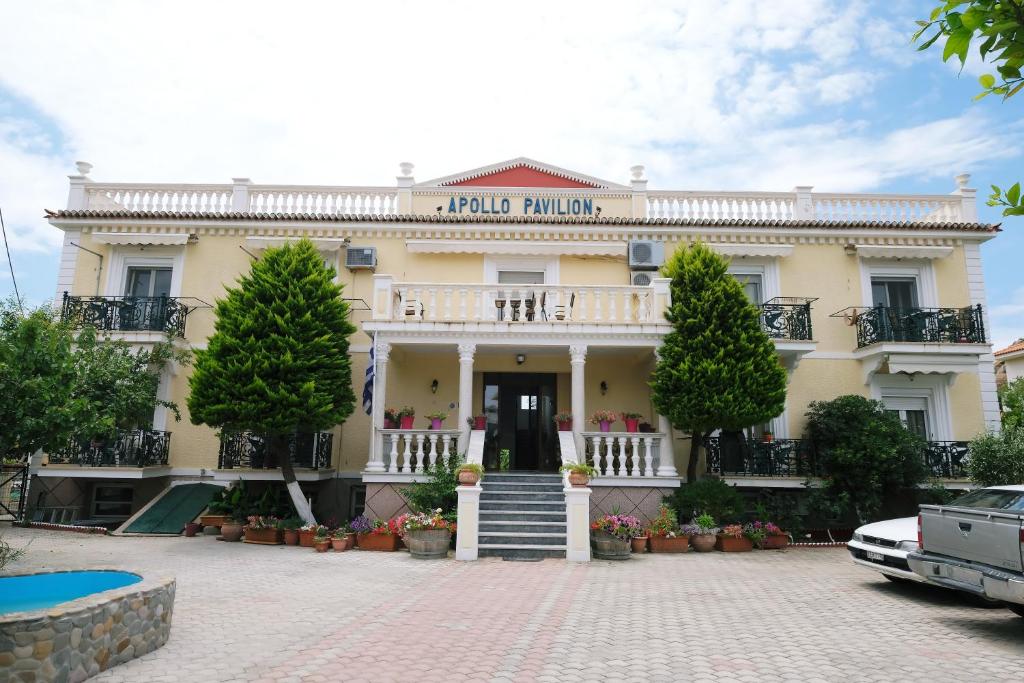
Apollo Pavilion Apartments (mid-range) is 10 minutes away from the bays in Myrina, with clean and spacious rooms equipped with all the necessities, a great breakfast, and a welcome gift waiting for you in the room upon your arrival.
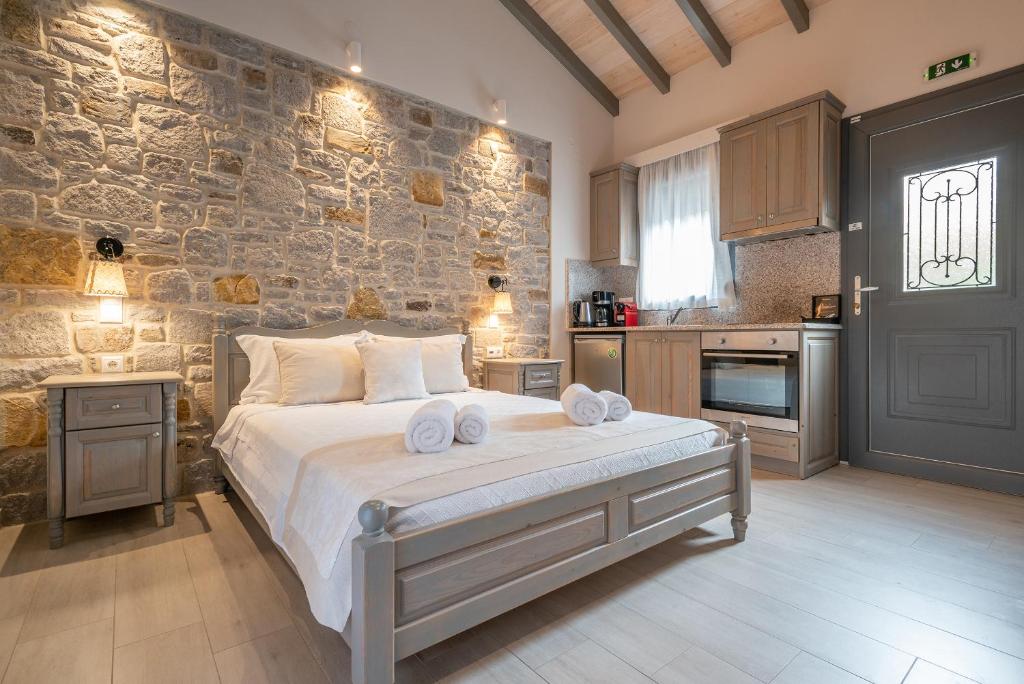
Amigdalies (mid-range) offers beautiful bedroom apartments with views over the castle of Myrina and the Aegean Sea. Richa Nera beach is 800 meters away.
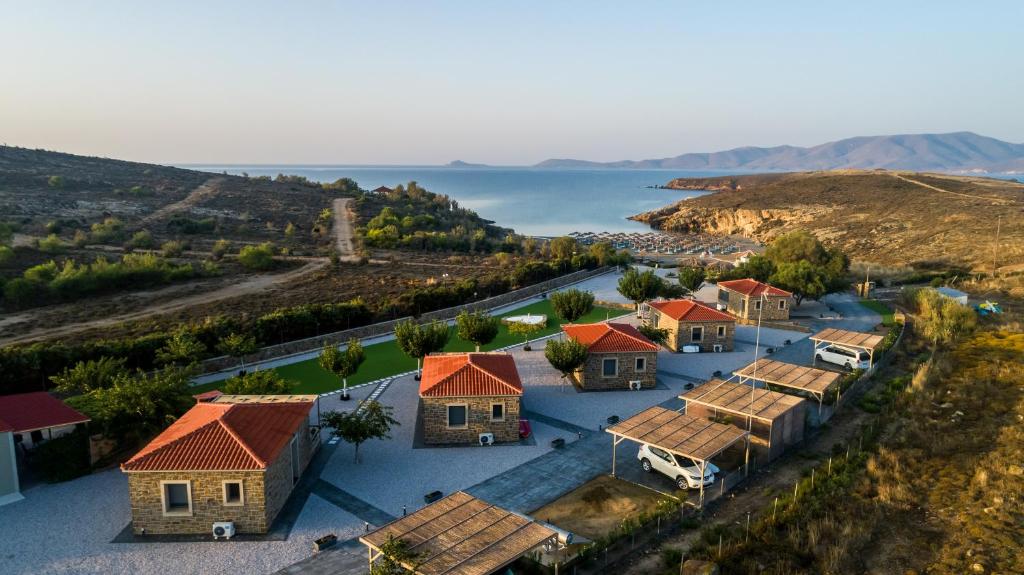
Aphrodite Stone Apartments (mid-range) in Moudros is a perfect peaceful setting with easy access to 2 beaches. Generous breakfast is served in the room every morning. The village of Moudros, with several cafes, restaurants, and small supermarkets, is just a short drive away.
FAQs for lemnos
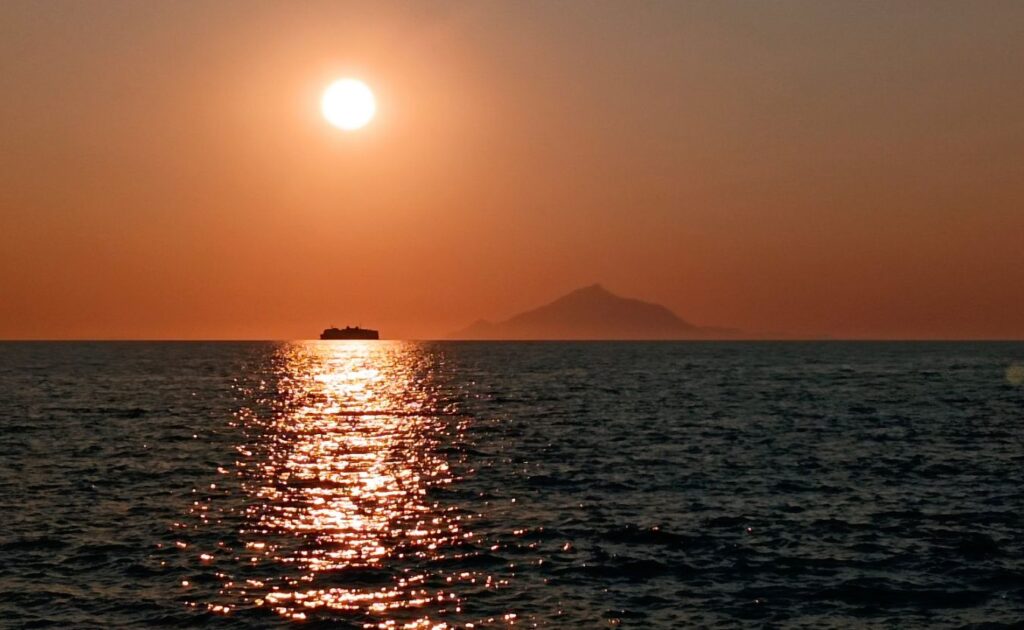
How to Get to Lemnos
You can get to Lemnos from Athens by ferry through the smaller port of Lavrio.
During the summer season, there are four sailings per week, while in winter, there are three. The trip takes approximately 9.5 hours, with a stopover at the port of Agios Efstratios island.
There are ferries from Kavala and Alexandroupoli ports to Lemnos with several sailings per week, and the trip takes 4.5 hours. The connection through Alexandroupoli has one sailing per week, including a stopover at Samothrace.
Lemnos is also connected by ferry with the islands of Chios and Lesvos.
Check timetables for ferries here.
Lemnos is connected by air daily to Athens and Thessaloniki. There are also flights to the islands of Lesvos, Chios, Samos, Rhodes, and Ikaria. Currently, two airlines offer flights to Lemnos: Aegean Airlines/ Olympic Air and Sky Express.
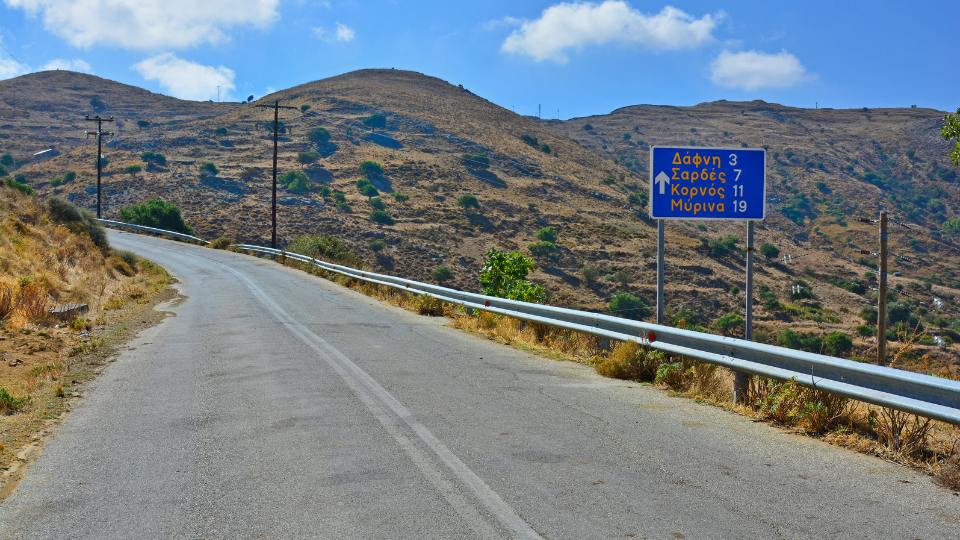
Getting Around Lemnos
The public buses (KTEL) of Lemnos connect Myrina with all the villages throughout the year, serving both locals and visitors. During the summer season, the KTEL buses also provide transportation to various beaches on the island with additional routes. There are also taxis available.
However, as the island is quite large with many things to do and see, I suggest you rent a car to explore all its hidden magic.
On the roads, there is a wide range of speed limits from 30 to 90 km/h which do not always make sense as you are driving. You need to be careful of your speed, especially during the summer, because the police issue fines.
Final Thoughts: Why Visit Lemnos?
Although getting to Lemnos may take some effort, it’s absolutely worth the journey. The island truly offers something for everyone: sandy beaches and breathtaking landscapes for outdoor enthusiasts, peaceful villages, ancient ruins, and museums for history lovers, as well as delicious local cuisine and exceptional native wines for food enthusiasts.
Happy travels, and may Lemnos blow you away just like it does every single traveler there!
Get the Best of Greece! Join Our FB Group & Subscribe to My YouTube Channel!
For more travel to Greece tips and beautiful destinations in the Greek islands please join my FREE Facebook Group or SUBSCRIBE to my YouTube & TikTok channels for amazing videos of Greece! Until then happy and safe travels, Evgenia.
Essential Travel Resources for Greece
- ‘Hello’ and ‘Thank You’ in Greek: “Ya sou” and “Efharisto”
- Booking.com: I use Booking.com mostly for Europe.
- All-Inclusive Resorts in Greece
- FerryScanner to book ferries to the Greek Islands
- Rent an Affordable Car in Greece
- Athens Metro Website (timetables and ticket info)
- Trains (Hellenic Train)
- Public Buses KTEL
- Get Your Guide: For all your day or multi-day tours and city guide needs, I use Get Your Guide
- Emergency Numbers Anywhere in Greece: AMBULANCE 166 – FIRE 199 – POLICE 100– EMERGENCY NUMBER 112
